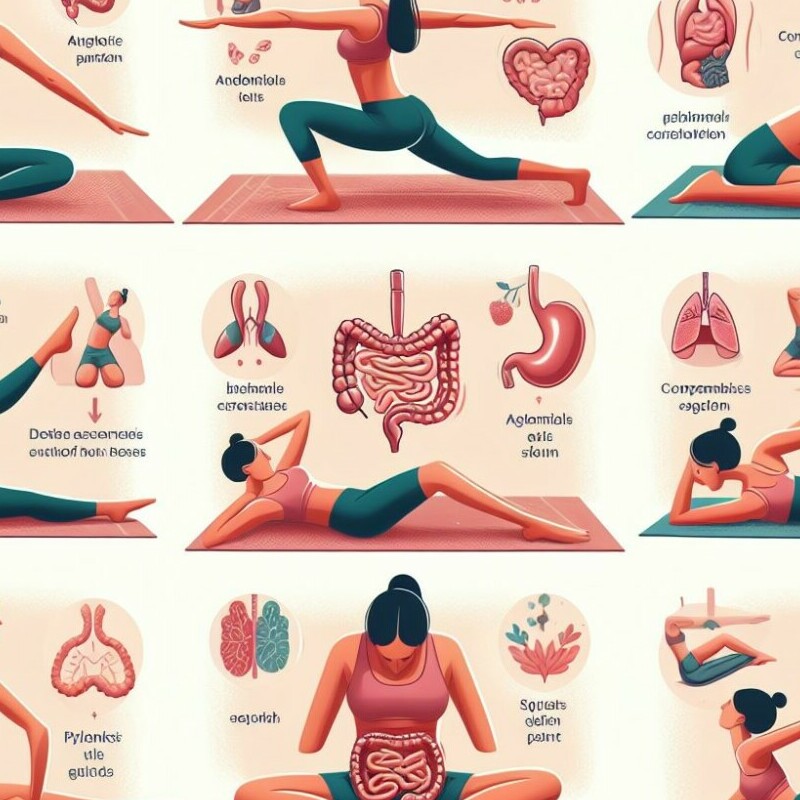
Let’s take a moment and explore the gut microbiome. It refers to a diverse community of microorganisms residing within your digestive system. You’ve likely heard about its importance for digestion and vitamin production. But here’s what should catch your attention, its profound impact on both your physical and mental well-being.
So, how does exercise come into play? Movement encourages a diverse microbiome. It’s not just building muscles or burning calories. it’s about sending a wave of benefits through your entire body, including those trillions of gut inhabitants.
Studies have increasingly suggested that physical activity not only tweaks but substantially enhances the variety of gut bacteria. For example, a 2014 study published in ‘Gut’ found that professional rugby players had a more diverse gut microbiota compared to non-athletes. And it’s not just for the pros – regular, moderate exercise has shown positive effects as well, expanding the different types of bacteria that can thrive in your gut.
Engaging in consistent exercise doesn’t just add diversity but also promotes a harmonious balance. This balance enhances your immune system function and may even improve your mood and energy levels.
As we explore further, you’ll discover the complex ways intense workouts influence this inner ecosystem, the best exercises for gut health, and practical steps to harness the power of physical activity to support your microbiome
How Do Vigorous Workouts Shape Our Gut?

Now we’ve laid the foundation on why exercise matters for gut health, I’d like to zero in on how the intensity of your workouts could play a crucial role.
Intense workouts—think high-intensity interval training or powerlifting—do more than just make you sweat; they can also trigger significant changes in your gut microbiome.
Research suggests a fascinating link between vigorous exercise and the diversity of gut bacteria. A study published in ‘Gut’ found that exercise, particularly at high intensities, increased the diversity of gut microbes, which is associated with a healthier gut. Not only does exercise promote the growth of beneficial bacterial species, but it also seems to enrich the whole microbial community.
But it’s not all about diversity: intense physical activity may alter the functionality of your gut bacteria, too. For instance, athletes often show increased levels of bacteria that help with muscle recovery and inflammation reduction, according to research from the ‘Journal of Sports Medicine and Physical Fitness’.
Addressing common misconceptions, it’s vital to understand that high-intensity exercises won’t harm your gut if done properly. They can be a powerful ally. However, moderation and recovery are key, as overtraining without adequate rest can lead to negative effects, including potential gut issues.
Remember, though, the evidence also indicates you don’t need to be an elite athlete to reap these benefits. A study presented in ‘Obesity’ demonstrated that moderate exercise could induce favorable changes in the gut microbiome, pointing to the idea that there is a sweet spot in exercise intensity that’s beneficial for gut microbes.
Balancing workout intensity with your body’s response is essential. This means listening to your body and incorporating rest when needed. It’s clear then that intense workouts have their place in a gut-health-focused fitness plan, but they should be part of a balanced approach that includes a variety of exercise types.
From Yoga to HIIT
The best exercises for your gut microbe

It’s not just about breaking a sweat; it’s about fostering a flourishing gut. When considering the exercises most beneficial to gut health, variety is key. Different activities stimulate your body in unique ways, potentially leading to a more diverse and resilient microbiome.
Research suggests that low-impact exercises like yoga or Pilates offer more than just relaxation and flexibility. Studies indicate these gentle yet profound movements encourage a positive shift in gut bacteria, possibly due to the stress-reducing effects that mitigate harm to beneficial microbes.
On the other hand, activities like high-intensity interval training (HIIT) may seem very different, but they also help your gut in important ways. HIIT involves short bursts of intense exercise, which can make your gut work better and improve the balance of good bacteria in your body
Experts tend to agree on a mix of aerobic, resistance, and flexibility exercises for optimal microbiome support. Swimming, jogging, and resistance training improve heart health and muscle strength. Additionally, they’re linked to increased microbial diversity. This is a sign of good gut health.
Integrating these activities into a daily routine can lead to long-term improvements in your microbial communities. By varying your exercise regimen and avoiding the ‘all or nothing’ mindset, you create an environment where your gut microbes can thrive.
Transformative Moves
Practical exercise tips to boost gut microbiome
By now, you know the profound impact exercise has on gut health. Simple movements can start a cascade of positive changes in your gut microbiome. Here are my final thoughts on shaping a thriving gut with exercise.
Sticking to a consistent exercise regimen is crucial. It’s the regularity, not just the type of exercise, that matters most. Don’t worry about fancy gym equipment or advanced fitness classes. Instead, focus on being active daily. Even a brisk 30-minute walk can set the stage for microbial diversity.
Building a healthy gut doesn’t happen overnight. Give your body time to adjust to the new levels of activity, and remember, as your gut microbes cheer on every step and stretch, they’re also changing and adapting to support you better.
If you’re looking for inspiration, consider the story of Mike, a teacher who turned his health around by incorporating daily cycling into his routine. After a few months, he felt more energetic, and his digestive issues also improved significantly. Mike’s experience underlines that a consistent, enjoyable exercise routine can make a world of difference.
So, take the first step. Choose activities you enjoy, which will help you stay on track. Whether it’s cycling like Mike, swimming, or even gardening, it’s about moving your body and nurturing those gut microbes. And don’t forget, every bit of movement counts toward building a robust microbiome and a healthier you.
Harness the power of your gut microbes for better health. Cultivate this relationship through consistent exercise, and witness a remarkable improvement in your overall well-being. So, step out and get active—it’s among the wisest choices you can make for your gut health.
References

Hello! Your article breaks down how movement benefits not just muscles but also trillions of gut inhabitants. It explains the positive impact of exercise on the diversity of gut bacteria, highlighting studies and emphasizing that one doesn’t need to be an elite athlete to reap these benefits. You suggest a balanced approach with incorporating both low-impact exercises like yoga and high-intensity workouts. Practical tips shows the importance of consistency over fancy routines,a friendly and informative guide to keeping those gut microbes happy and thriving! Thank you for sharing.
Hi Ela,
Thank you so much for your thoughtful feedback! I’m glad you found the article informative and helpful in understanding the connection between movement and gut health. It’s indeed essential to emphasize that everyone can benefit from incorporating various forms of exercise into their routine, regardless of fitness level. Consistency is key, and I’m thrilled you found the practical tips useful.
Thanks again
Hey great work here. Exercise can be a wonderful tool for people to improve their gut microbiome health. Which will improve both their physical and mental health. It can be very hard to get motivated to do intense exercise however. But the rewards are worth it. Nothing good comes easy as they say. Good luck out there.
One of the hardest weights to lose is stomach fat but an excess of the stomach can cause a lot of health-related issues besides not looking good. But it is good to know that you are offering this guide to help with gut health that I think is so important because some many people are overlooking this.
Thank you for sharing your thoughts! You’re right that excess stomach fat not only affects our appearance but also poses significant health risks. It’s encouraging to see more attention being given to gut health, as it plays a crucial role in our overall well-being